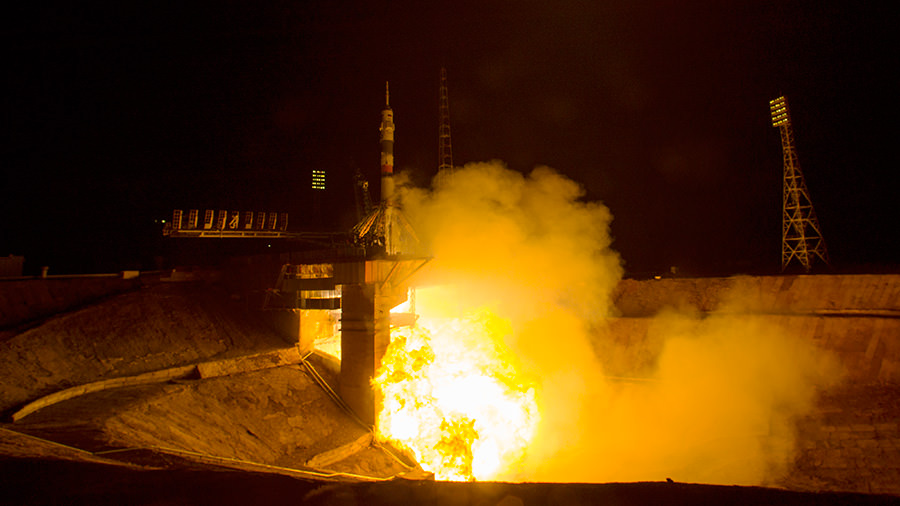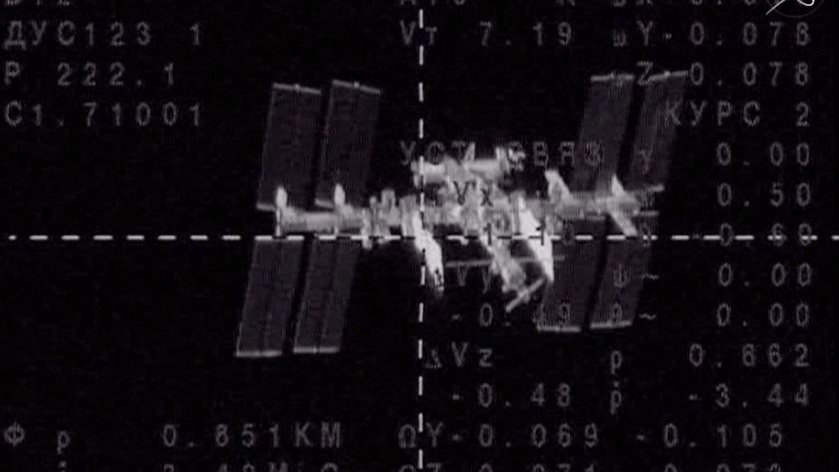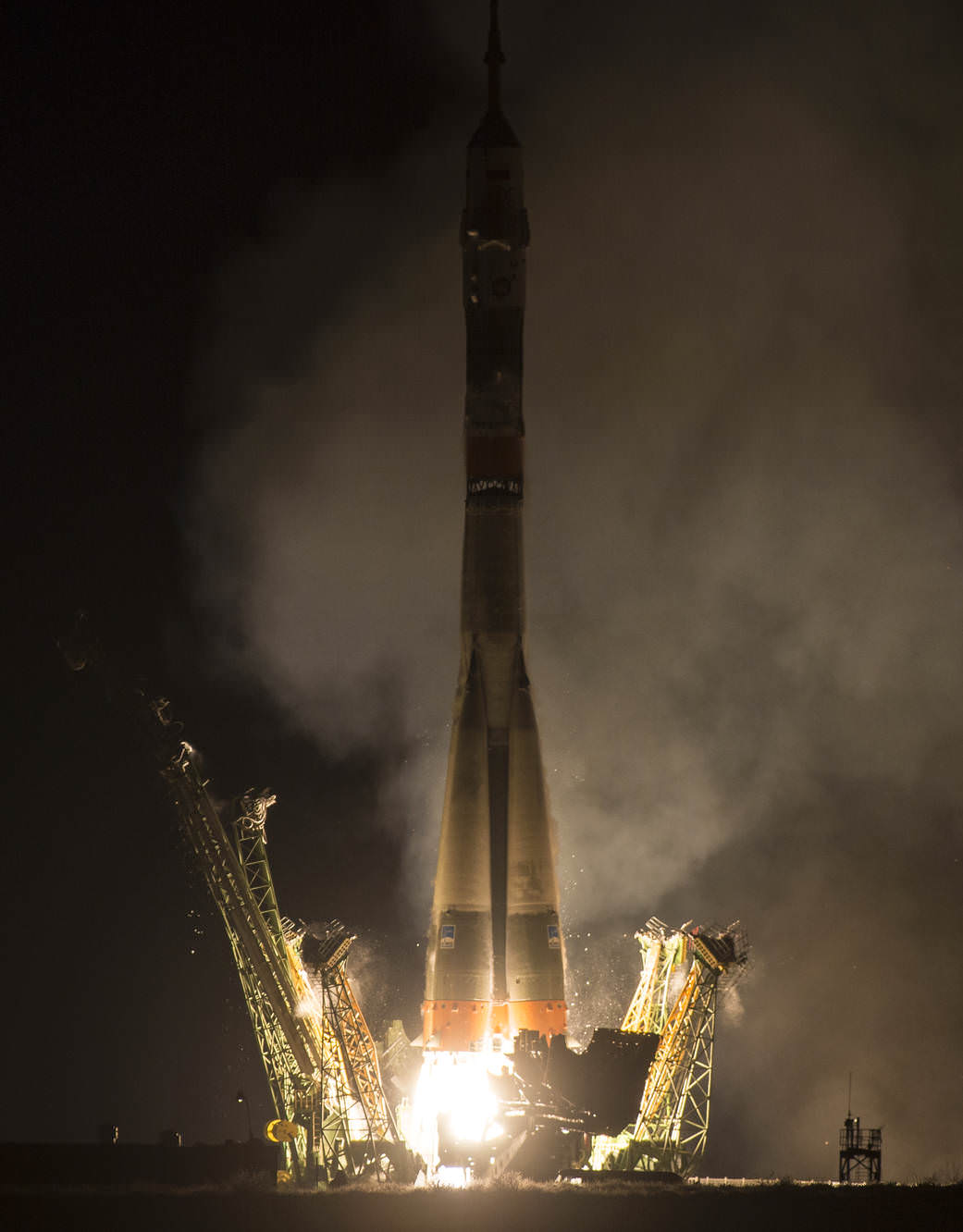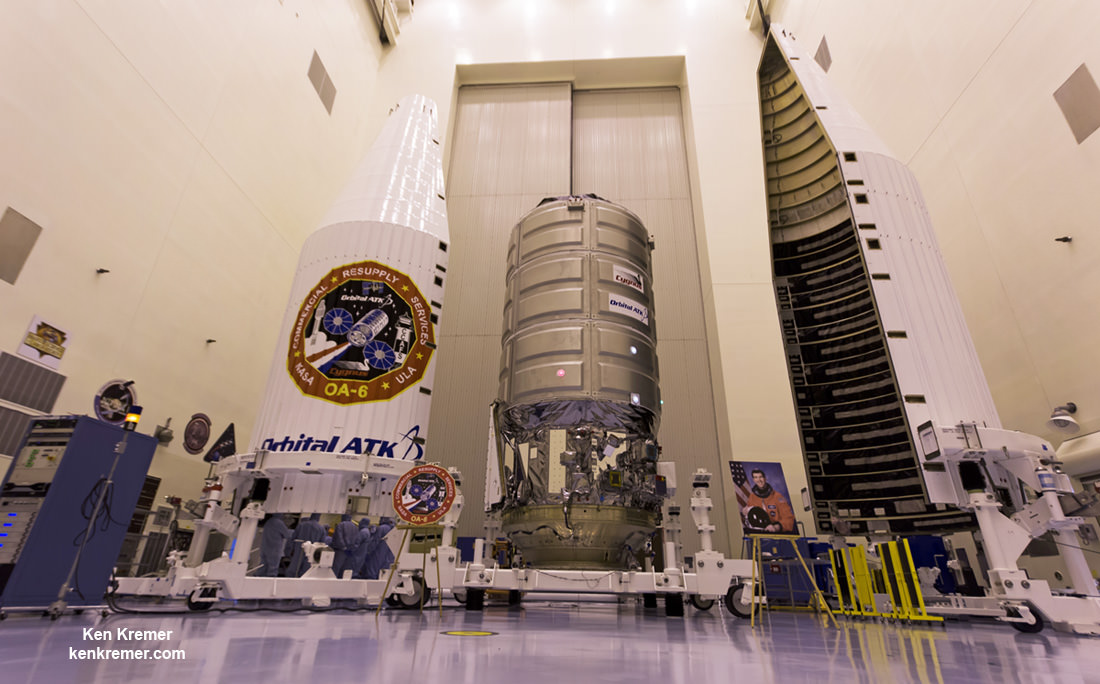
The first American to become a three-time, long-term resident of the International Space Station (ISS) has just arrived at the orbiting outpost this evening, Friday, March 18 after blasting off with two Russian crewmates in a Soyuz spacecraft barely six hours ago and successfully completing a fast-track four orbit rendezvous.
NASA astronaut Jeff Williams rocketed to orbit aboard the Soyuz TMA-20M spacecraft with Russian cosmonauts Alexey Ovchinin and Oleg Skripochka of the Russian space agency Roscosmos.
The Russian-American trio vaulted off from the historic Launch Pad 1 at Baikonur Cosmodrome in Kazakhstan on Saturday, March 19, 2016 at 5:26 p.m. EST (3:26 a.m. Saturday, March 19, Baikonur time). Its the same pad from which Yuri Gagarin blasted to orbit in 1961 to become the world’s first human to travel to space.
Williams, Ovchinin and Skripochka reached the orbiting laboratory at 11:09 p.m. and successfully docked at the Poisk module approximately 250 miles (400 km) above the Southern Pacific Ocean off the western coast of Peru, after today’s flawless launch and rendezvous with the station.
They conducted a fly around maneuver of the ISS with the Soyuz to line up with the Poisk module at a distance of about 400 meters some 10 minutes before docking. Spectacular cameras views were transmitted from the Soyuz and ISS during the final approach and docking.

“The crew is now firmly affixed to the space station,” radioed NASA mission control, after the hooks and latches were engaged to complete a hard dock and mate to the station.
Here’s a video of the spectacular overnight launch:
Their mission aboard the space station will last for nearly six months.
Overall this will be Williams fourth space mission, including three Soyuz trips and one Space Shuttle trip to space. During Expedition 47, Williams will set a new record for cumulative time in space by an American of 534 days.
Williams has already spent 362 days in space. He will thus surpass the recent American record for time in space set by NASA astronaut and Expedition 46 Commander Scott Kelly.
With the arrival of the new trio, the station is restored to its full complement of six crewmates and marks the start of the full Expedition 47 mission, with an international crew of astronauts and cosmonauts from America, Russia and England.
The three join Expedition 47 Commander Tim Kopra of NASA and Flight Engineers Tim Peake of ESA (European Space Agency) and Yuri Malenchenko of Roscosmos.

The combined efforts of the six person crew are aimed at advancing NASA’s plans for sending humans on a ‘Journey to Mars’ in the 2030s.
They also follow on and continue the research investigations of the recently concluded mission of the first ever ‘1 Year ISS crew’ comprising of Scott Kelly and Mikhail Kornienko who returned to Earth on March 1 after 340 days in space.
After the docking probe was removed and leak checks completed, the hatches between the ships were opened at 1:15 a.m. EDT on Sat. March 19.
The new Expedition 47 crew members will conduct more than 250 science investigation in fields that benefit all of humanity, such as biology, Earth science, human research, physical sciences and technology development, during their six month mission.
Many of these research experiments for both Expeditions 47 and 48 will be launched to the ISS just three days from now, when the next commercial Cygnus cargo freighter lifts off on the commercial resupply servives-6 (CRS-6) flight.
The science studies “include a study of realistic fire scenarios on a spacecraft, enable the first space-based observations of meteors entering Earth’s atmosphere from space, explore how regolith, or soil, behaves and moves in microgravity, test a gecko-inspired adhesive gripping device that can stick on command in the harsh environment of space, and add a new 3-D printer for use on station,” according to NASA officials.
The Orbital ATK CRS-6 mission with over 3500 kg of supplies and science experiments will be carried to orbit by a United Launch Alliance Atlas V rocket on Tuesday, March 22.

SpaceX plans to launch its next cargo Dragon to the station on April 8, the first since a launch catastrophe on June 28, 2015 ended in failure. The SpaceX-8 mission is scheduled to carry the Bigelow Expandable Activity Module (BEAM). It is an experimental inflatable and expandable module that astronauts will enter.
In between, Russia will launch a Progress resupply ship with three tons of supplies, food and experiments.
Watch for Ken’s onsite Atlas/Cygnus launch reports direct from the Kennedy Space Center in Florida.
Stay tuned here for Ken’s continuing Earth and planetary science and human spaceflight news.
………….
Learn more about Orbital ATK Cygnus, ISS, ULA Atlas rocket, SpaceX, Boeing, Space Taxis, Mars rovers, Orion, SLS, Antares, NASA missions and more at Ken’s upcoming outreach events:
Mar 21/22: “Orbital ATK Atlas/Cygnus launch to the ISS, ULA, SpaceX, SLS, Orion, Commercial crew, Curiosity explores Mars, Pluto and more,” Kennedy Space Center Quality Inn, Titusville, FL, evening Mar 21 /late afternoon Mar 22
